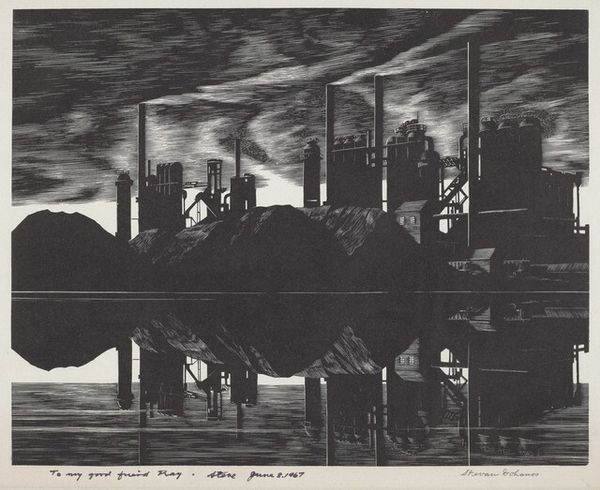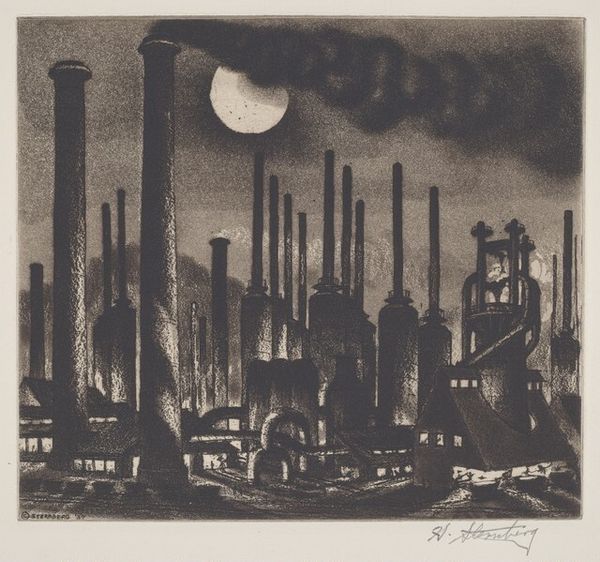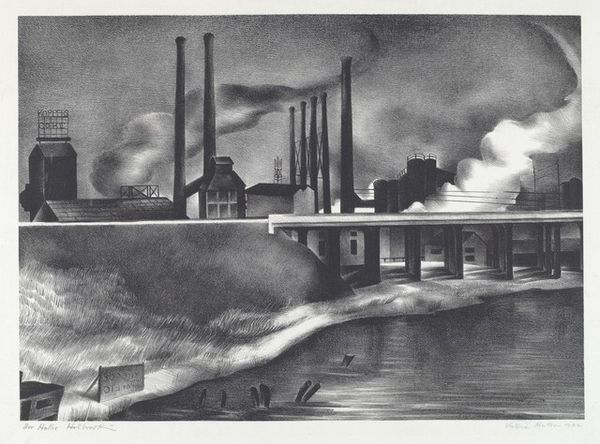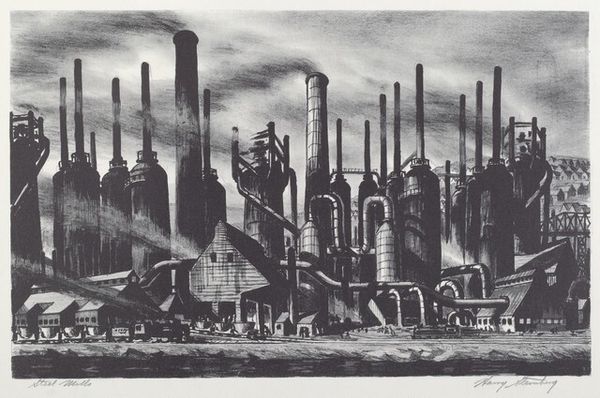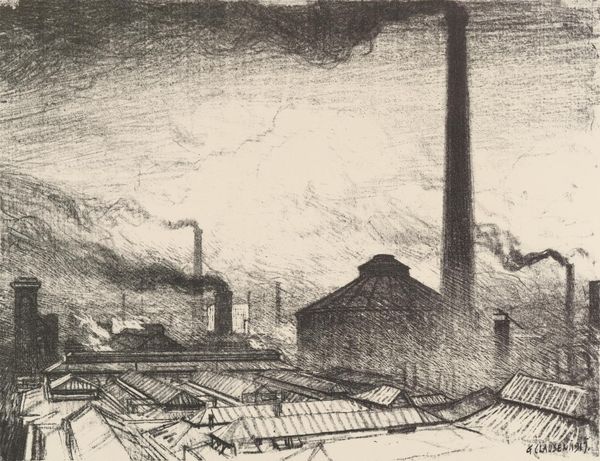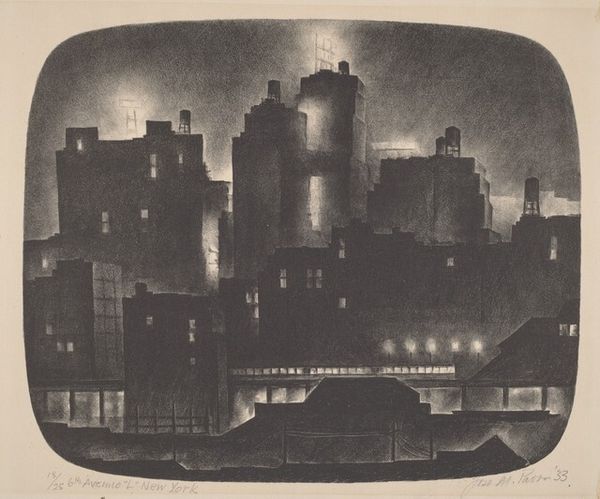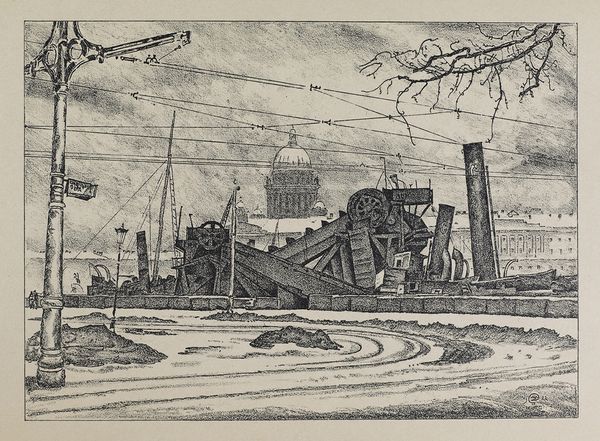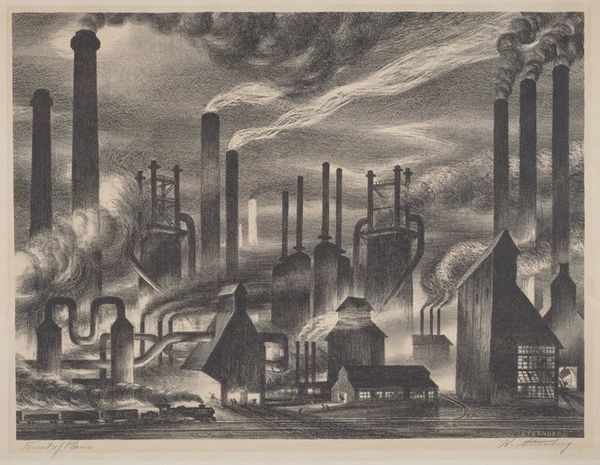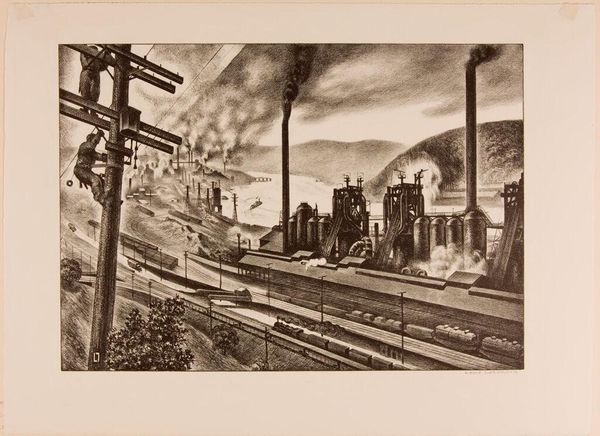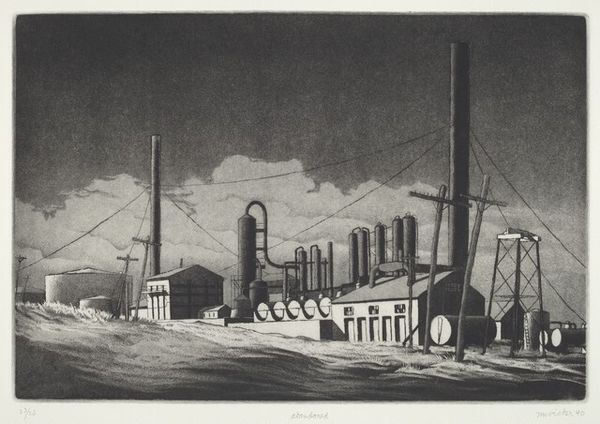
Dimensions: image: 450 x 685 mm support: 540 x 690 mm
Copyright: © Tacita Dean, courtesy Frith Street Gallery, London and Marian Goodman Gallery, New York/Paris | CC-BY-NC-ND 4.0 DEED, Photo: Tate
Curator: Tacita Dean’s “Beautiful Sheffield” presents a vista of the industrial landscape, rendered with smokestacks belching against a somber sky. Editor: My first impression is one of overwhelming oppression. The sheer scale of industry against what must be a cityscape, and the visual weight of the smog… it’s almost suffocating. Curator: Note how Dean interweaves handwritten notations across the image. They act as mnemonic devices, adding layers of memory and contemplation to the industrial scene. Editor: These annotations transform the image into a palimpsest of sorts, revealing the artist’s own engagement with the politics of labor, the environmental costs of production, and the lives intertwined with this heavy industry. Curator: In many ways, the piece evokes the cyclical nature of human endeavor, where ambition and industry often leave indelible marks on the landscape. Editor: Yes, a landscape permanently scarred and a populace bearing the burden of progress. It's a stark reminder of the choices that shape our environments and communities.
Comments
tate 6 months ago
⋮
http://www.tate.org.uk/art/artworks/dean-beautiful-sheffield-p20264
Join the conversation
Join millions of artists and users on Artera today and experience the ultimate creative platform.
tate 6 months ago
⋮
Beautiful Sheffield belongs to a portfolio of twenty black and white photogravures with etching collectively entitled The Russian Ending. The portfolio was printed by Niels Borch Jensen, Copenhagen and published by Peter Blum Editions, New York in an edition of thirty-five; Tate’s copy is the fifth of ten artist’s proofs. Each image in the portfolio is derived from a postcard collected by the artist in her visits to European flea markets. Most of the images depict accidents and disasters, both man-made and natural. Superimposed on each image are white handwritten notes in the style of film directions with instructions for lighting, sound and camera movements, suggesting that the each picture is the working note for a film. The title of the series is taken from a convention in the early years of the Danish film industry when each film was produced in two versions, one with a happy ending for the American market, the other with a tragic ending for Russian audiences. Dean’s interventions encourage viewers to formulate narratives leading up to the tragic denouements in the prints, engaging and implicating the audience in the creative process.

